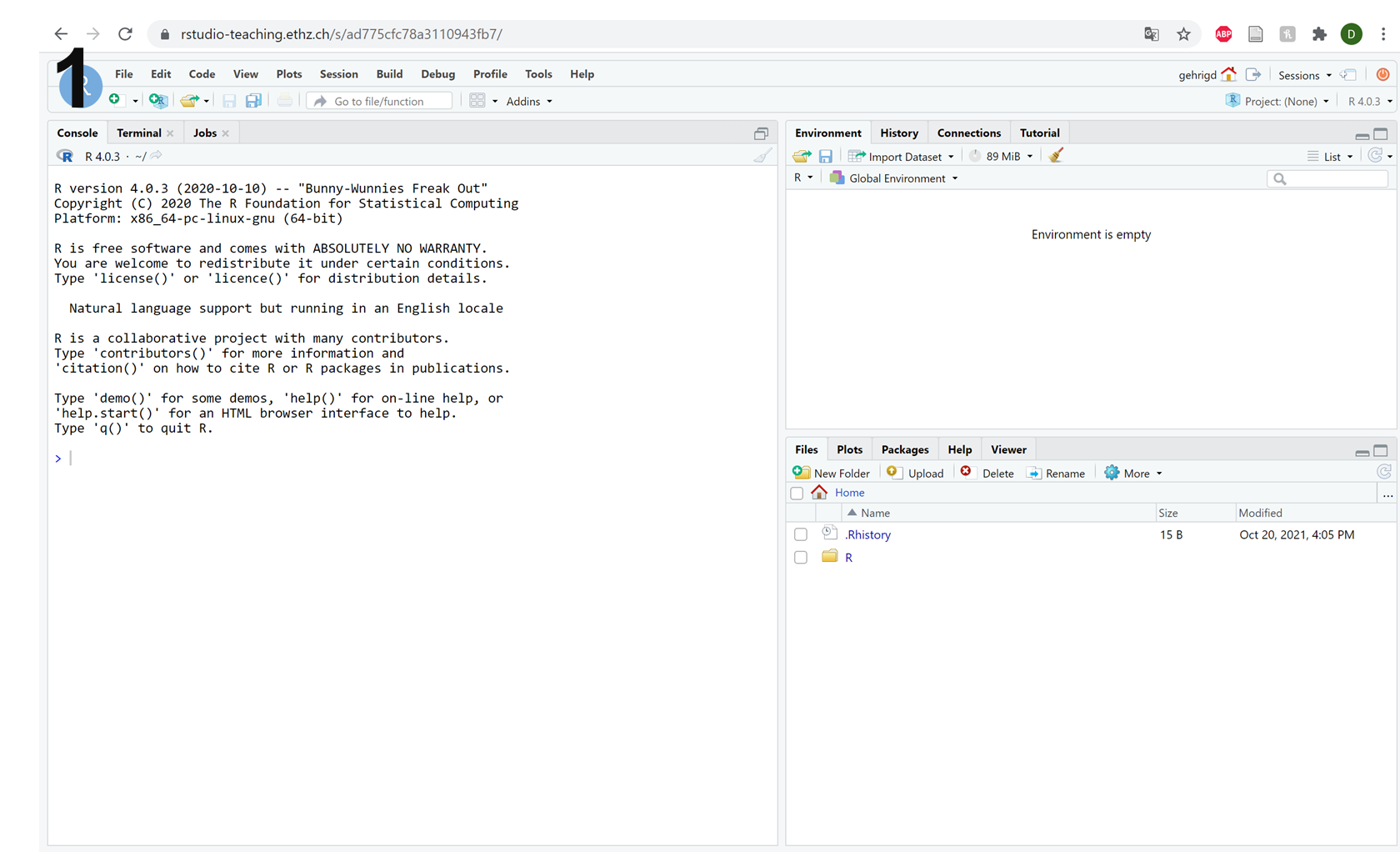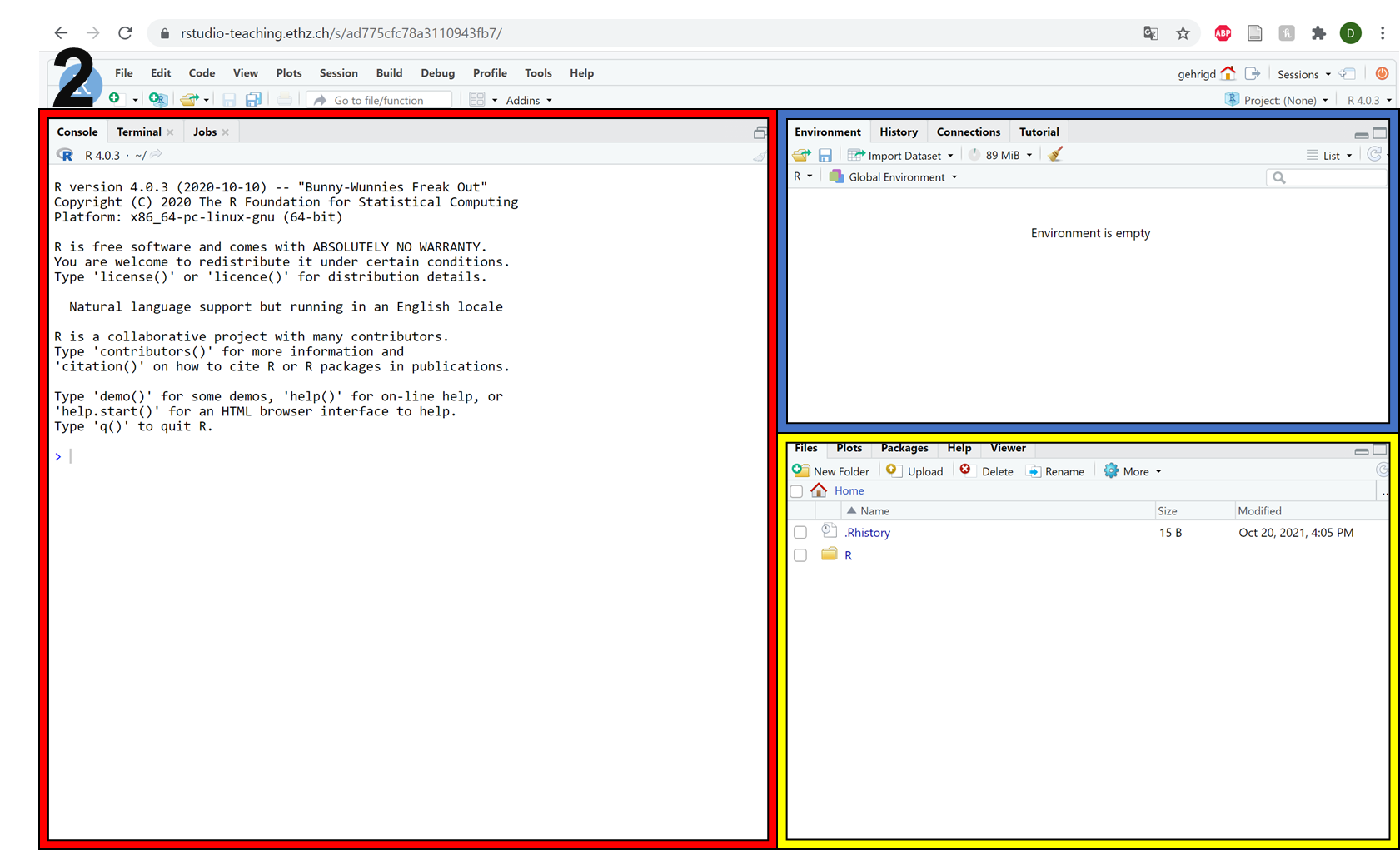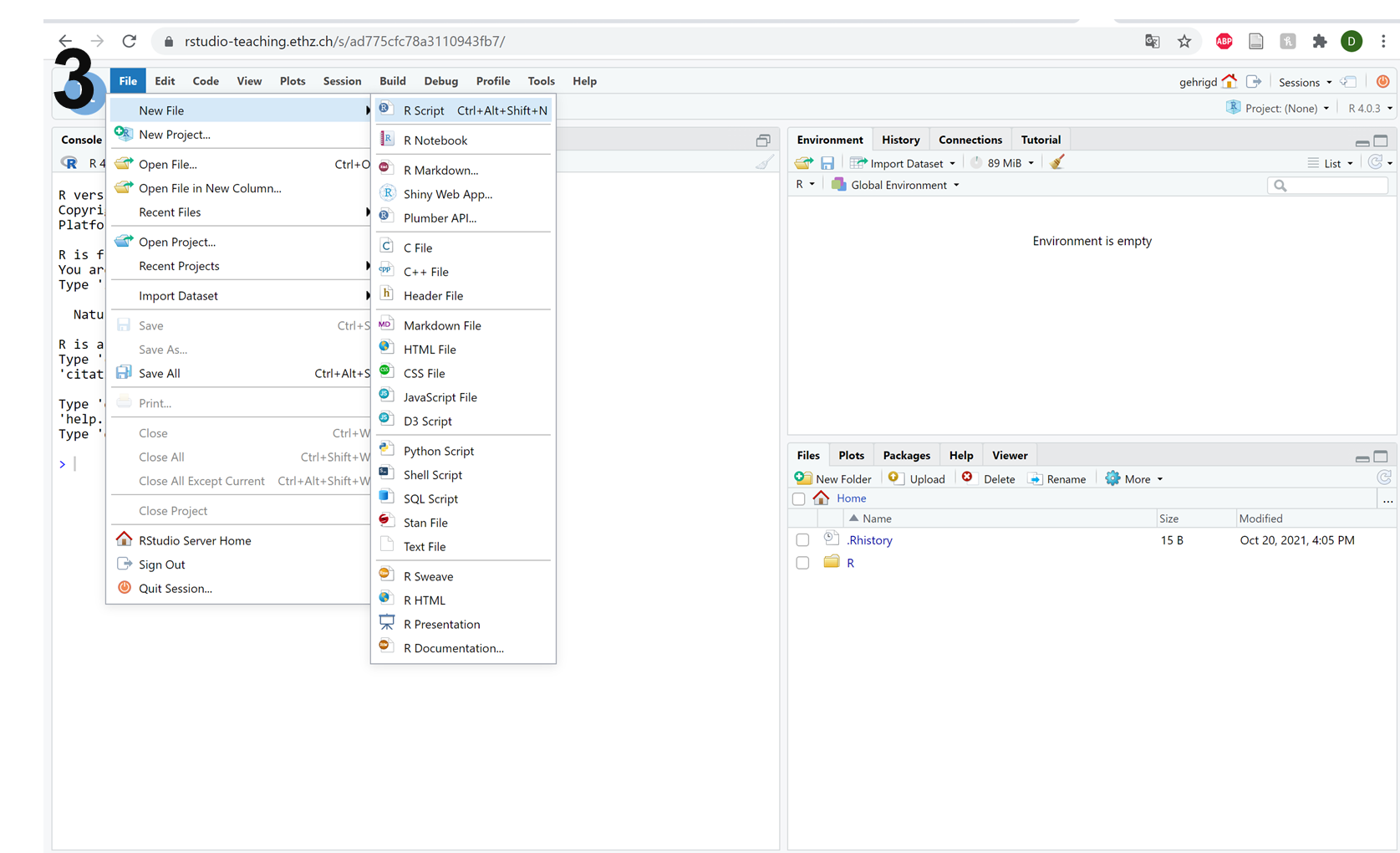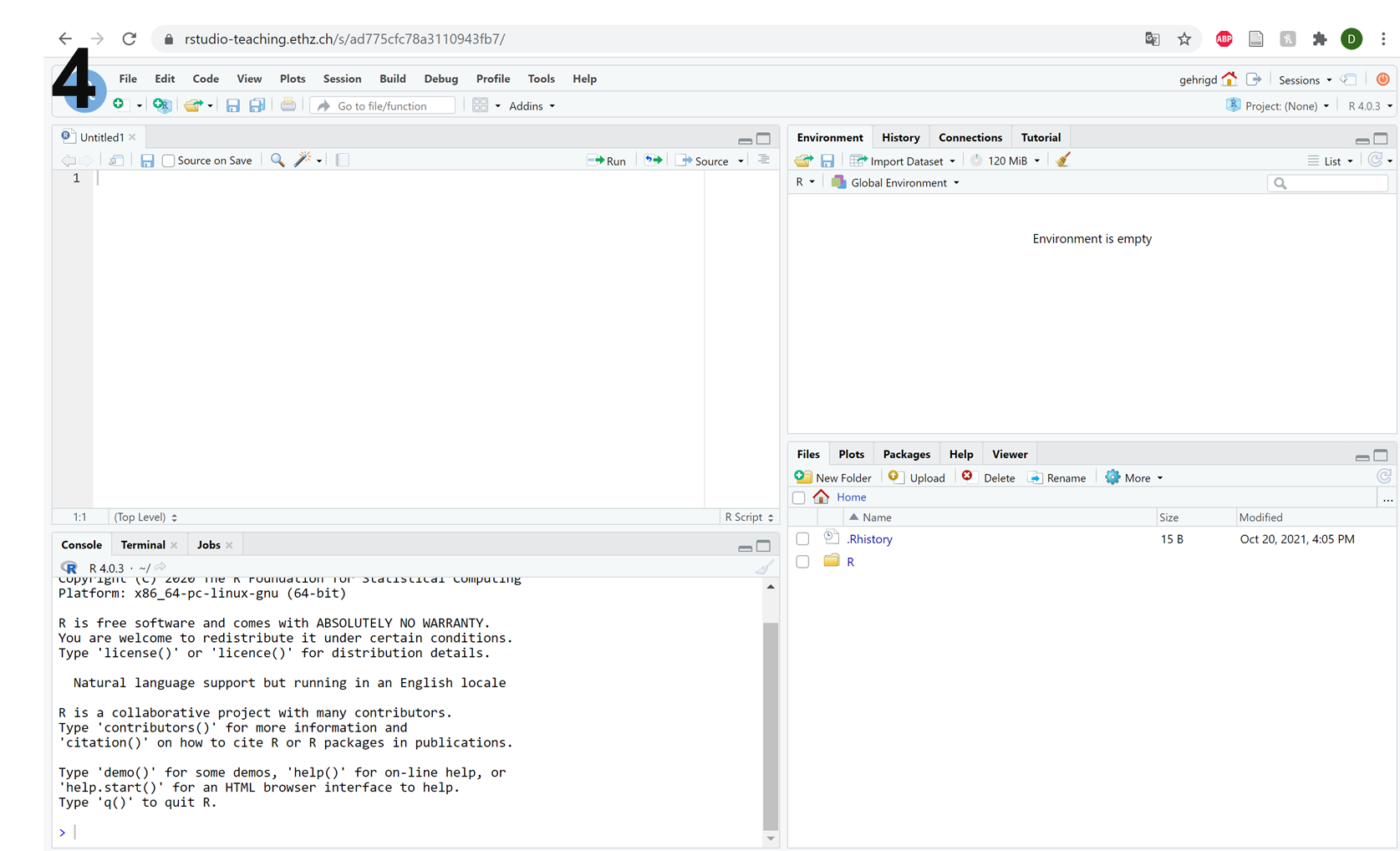R-Studio and Jupyter#
Parts of the course will rely on using R or Python. To make these programming languages easily accessible to you on Cousteau, we created links for R-studio (R) and Jupyter (Python) which you can find down below:
R-Studio: http://cousteau-rstudio.ethz.ch/
Jupyter: http://cousteau-jupyter.ethz.ch/
R-Studio#
Please find the login page of our R-Studio environment through the link http://cousteau-rstudio.ethz.ch/. You can use your ethz-login to enter the web-based R-studio page.

Below you can see how your R-Studio environment looks like when you first login (Picture 1).
You should be familiar with this layout from “Statistik II” since it is the same as R-Studio on your computer. In case you do not remember, here we describe an overview of the different panels (Picture 2):
The red frame shows the R console where you can issue commands and results are shown.
The blue frame shows the environment where all your variables and data frames are stored.
The yellow frame shows your home folder on Cousteau including files in that folder. Thus this panel can also be used to explore your file system on the server from within the graphical user interface (GUI) of R-Studio. In addition, it contains plots and packages from your session, and it can show you help information.
If you are wondering where the R script is, you have to open it manually. Click on ‘File’ -> ‘New File’ -> ‘R Script’ (Picture 3) or use the shortcut with key combination ‘Ctrl + Alt + Shift + N’.
This should lead you to the 4 panels you know from “Statistik II” (Picture 4).
Connecting to Cousteau within R-Studio#
In your previous exercise you learned how to connect to multiple remote servers (Euler, Cousteau) through the command line interface. The R-Studio environment which we setup for this course and introduced here also runs on Cousteau.
Alternatively to connecting to Cousteau through the command line interface with the command ssh, you can actually access the server through a terminal from within R-Studio. When you login to a new R-Studio session, you can find the terminal right next to the console (on the top left). If you click on ‘Terminal’, the beginning of the line shows that you are connected to Cousteau by description of your username@server.
If you cannot see the terminal anywhere you probably closed it by accident, in this case just open another terminal manually by clicking on ‘Tool’ -> ‘Terminal’ -> ‘New Terminal’.
Jupyter#
Please find the login page of our Jupyter environment through the link http://cousteau-jupyter.ethz.ch/. You can use your ethz-login to enter the Jupyter-Hub.
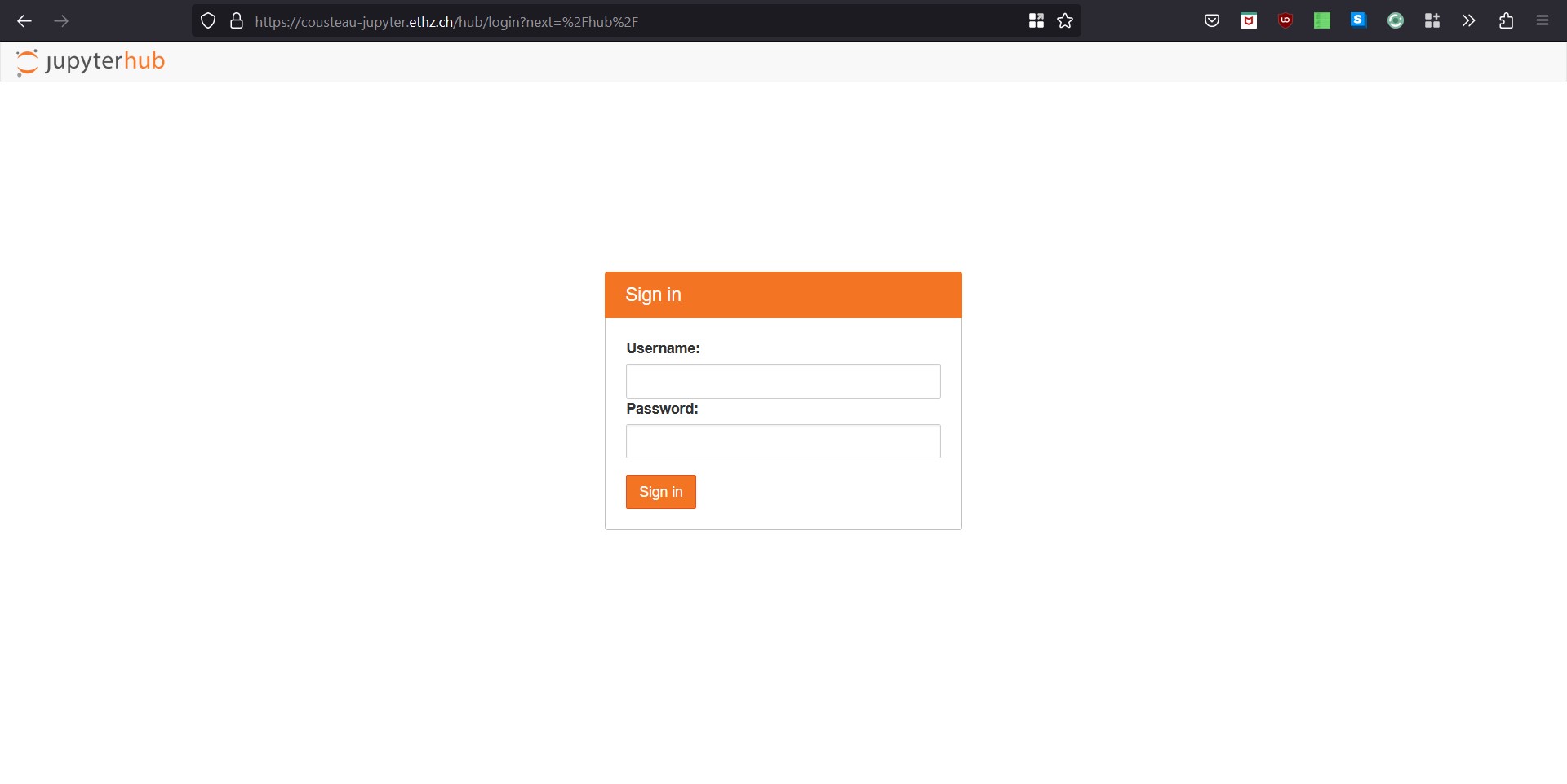
Once you are logged in, Jupyter will launch your server.
The blue frame shows your launcher where you can select what specifically you want to launch (a notebook, the console, the terminal, etc.).
The orange frame shows your home folder on Cousteau inlcuding files in that folder. Thus this panel can also be used to explore your file system on the server from within the graphical user interface (GUI) of Jupyter-Hub.
The yellow frame shows the menu bar.
The green frame shows the options bar which allows you to start a new launcher, create new folders and upload files to Cousteau from your local machine.
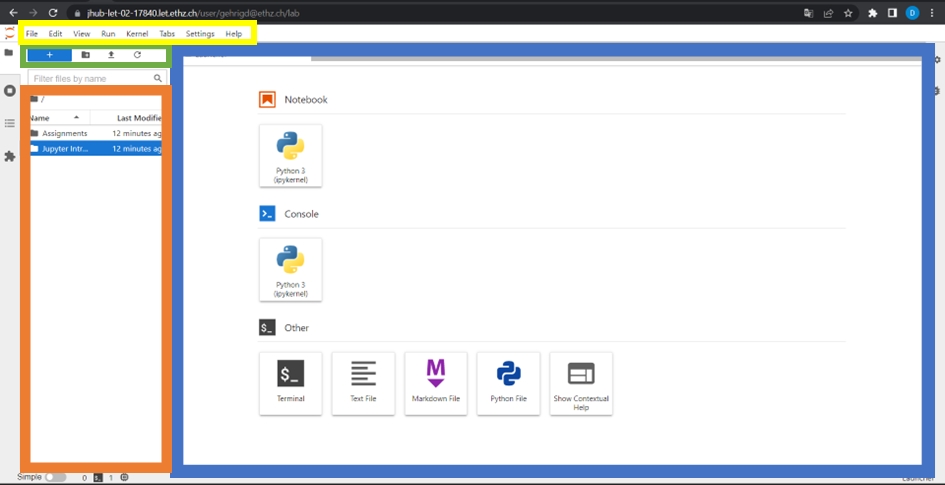
Exercise 0.5#
Exercise 0.5
Try to connect to both R-Studio and Jupyter
Go to http://cousteau-rstudio.ethz.ch/.
Go to http://cousteau-jupyter.ethz.ch/.
Login to both environments and explore.
